Abstract
After rats received preliminary training to avoid shock on a discrete-trial retractable-bar avoidance procedure, the procedure was changed such that responses retracted the lever but did not affect the rate of shock. Responses only delayed the onset of shock. About half of the animals under these procedures responded consistently on almost 100% of the discrete-trial cycles over days. When short latencies maximized the response-shock delay, animals tended to make short-latency responses. When long latencies maximized the response-shock delay, animals tended to make long-latency responses. When all response latencies produced the same response-shock delay, animals made differing average-latency responses. And, when responses did not delay shock, most of the animals primarily engaged in shock-elicited responding while the other animals engaged in preshock responding.
Keywords: response-shock delay, discrete-trial avoidance, unsignalled shock, retractable lever, rats
Full text
PDF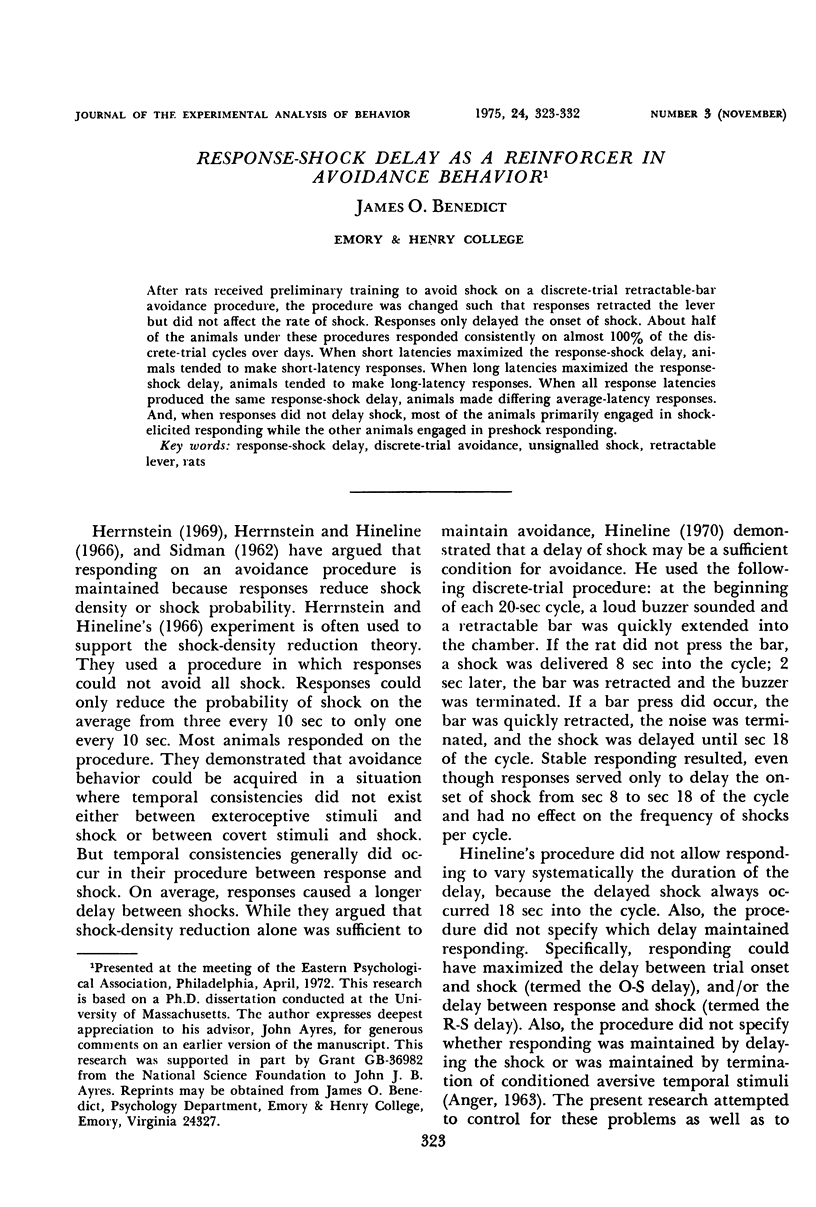

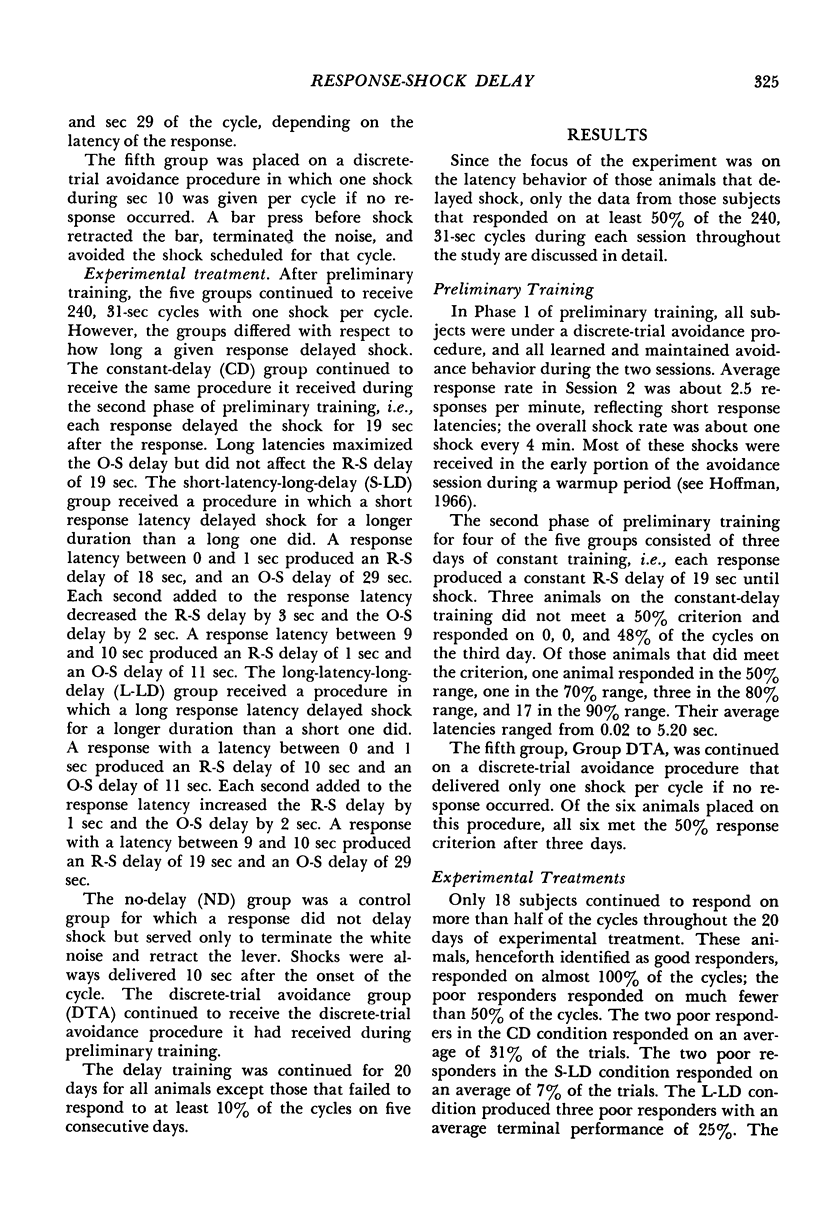
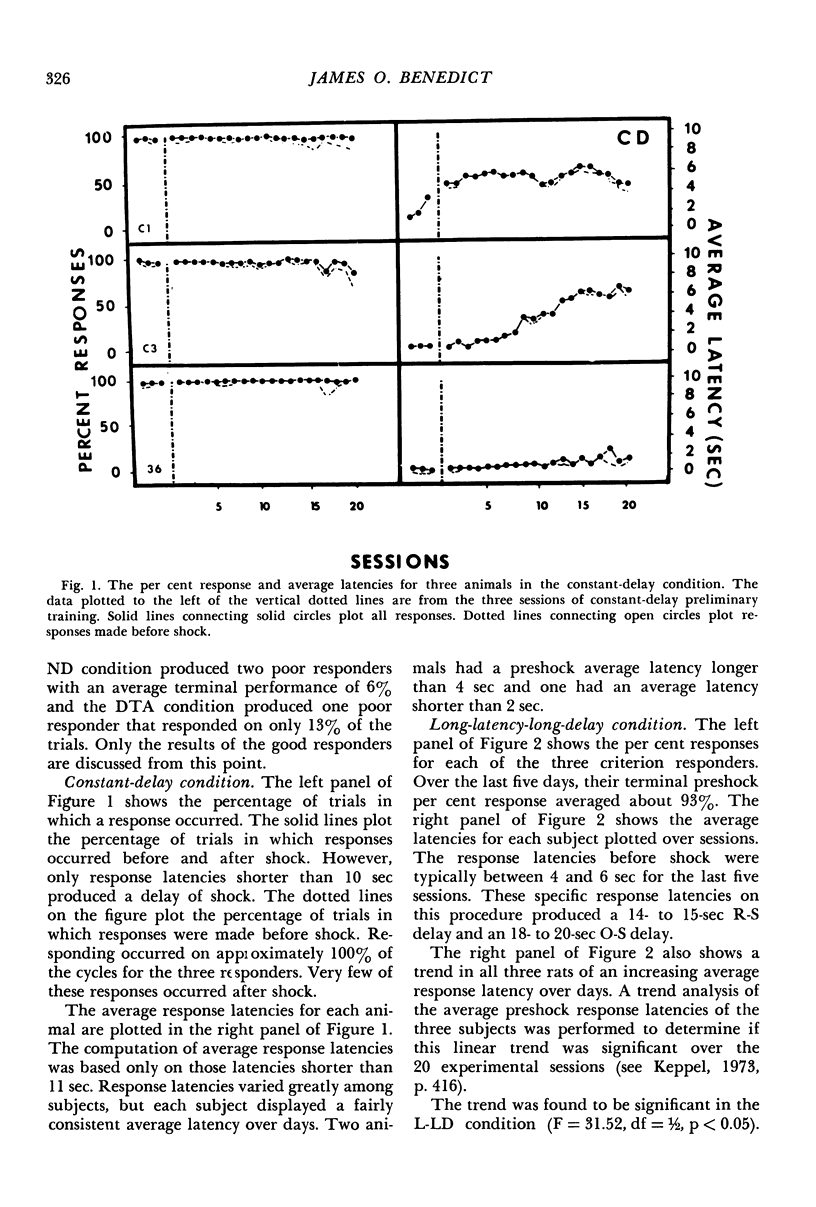

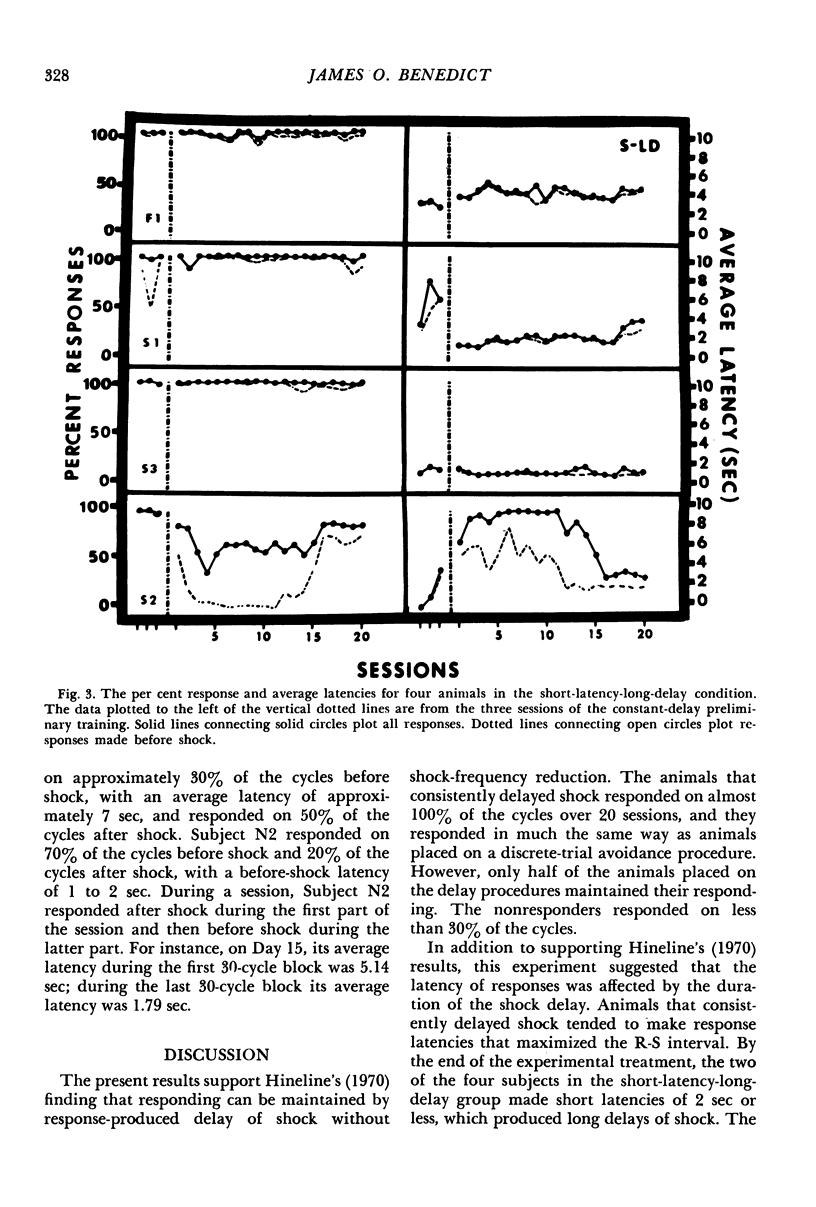
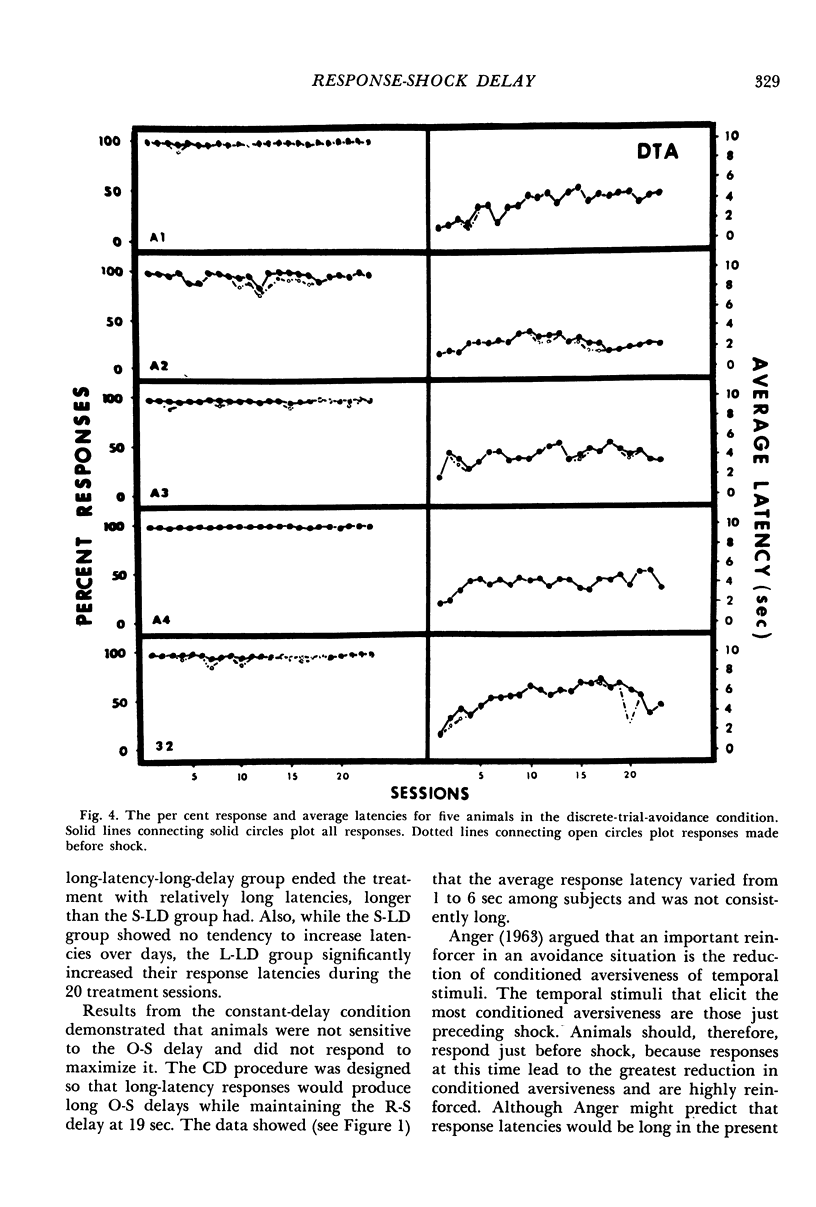

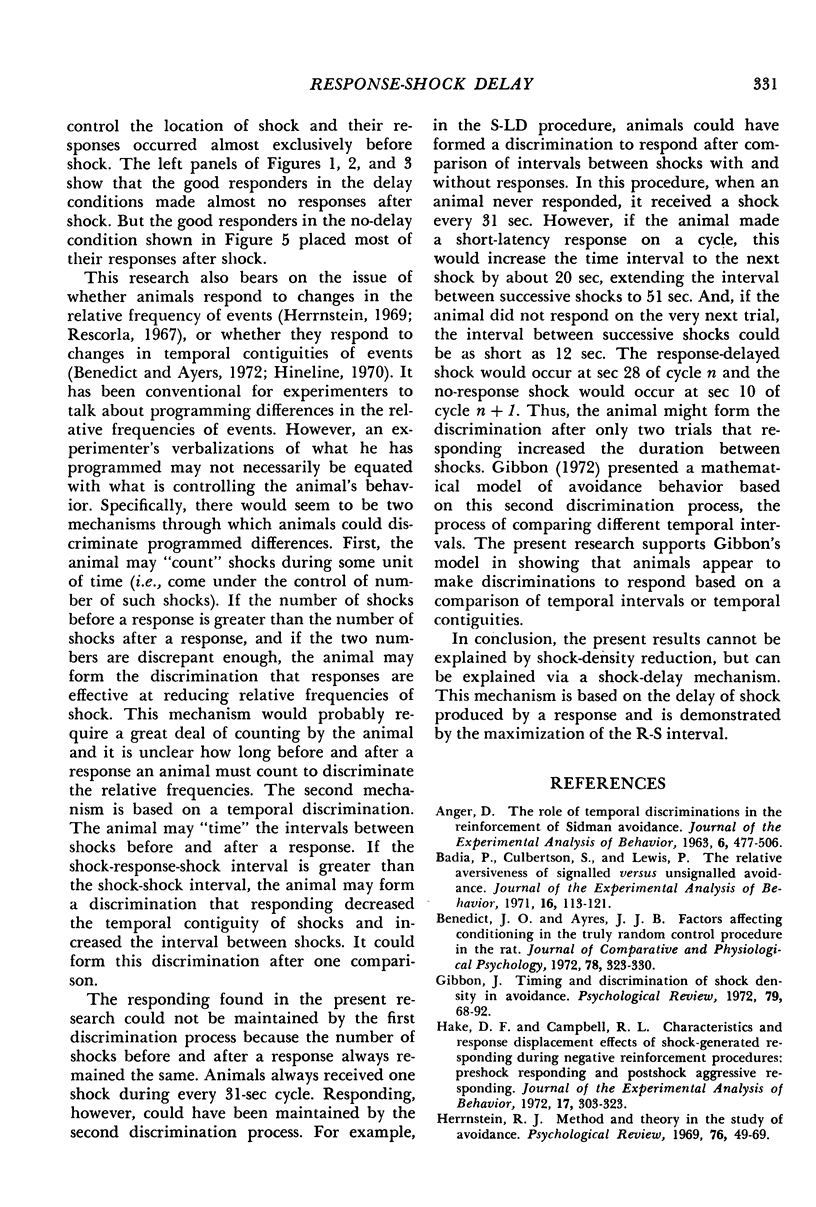

Selected References
These references are in PubMed. This may not be the complete list of references from this article.
- ANGER D. The role of temporal discriminations in the reinforcement of Sidman avoidance behavior. J Exp Anal Behav. 1963 Jul;6(3):477–506. doi: 10.1901/jeab.1963.6-s477. [DOI] [PMC free article] [PubMed] [Google Scholar]
- Badia P., Culbertson S., Lewis P. The relative aversiveness of signalled vs unsignalled avoidance. J Exp Anal Behav. 1971 Jul;16(1):113–121. doi: 10.1901/jeab.1971.16-113. [DOI] [PMC free article] [PubMed] [Google Scholar]
- Benedict J. O., Ayres J. J. Factors affecting conditioning in the truly random control procedure in the rat. J Comp Physiol Psychol. 1972 Feb;78(2):323–330. doi: 10.1037/h0032296. [DOI] [PubMed] [Google Scholar]
- Hake D. F., Campbell R. L. Characteristics and response-displacement effects of shock-generated responding during negative reinforcement procedures: pre-shock responding and post-shock aggressive responding. J Exp Anal Behav. 1972 May;17(3):303–323. doi: 10.1901/jeab.1972.17-303. [DOI] [PMC free article] [PubMed] [Google Scholar]
- Herrnstein R. J., Hineline P. N. Negative reinforcement as shock-frequency reduction. J Exp Anal Behav. 1966 Jul;9(4):421–430. doi: 10.1901/jeab.1966.9-421. [DOI] [PMC free article] [PubMed] [Google Scholar]
- Herrnstein R. J. Method and theory in the study of avoidance. Psychol Rev. 1969 Jan;76(1):49–69. doi: 10.1037/h0026786. [DOI] [PubMed] [Google Scholar]
- Hineline P. N. Negative reinforcement without shock reduction. J Exp Anal Behav. 1970 Nov;14(3):259–268. doi: 10.1901/jeab.1970.14-259. [DOI] [PMC free article] [PubMed] [Google Scholar]
- LOCKARD J. S. Choice of a warning signal or no warning signal in an unavoidable shock situation. J Comp Physiol Psychol. 1963 Jun;56:526–530. doi: 10.1037/h0041552. [DOI] [PubMed] [Google Scholar]
- Perkins C. C., Jr, Seymann R. G., Levis D. J., Spencer R., Jr Factors affecting preference for signal-shock over shock-signal. J Exp Psychol. 1966 Aug;72(2):190–196. doi: 10.1037/h0023491. [DOI] [PubMed] [Google Scholar]
- Rescorla R. A. Pavlovian conditioning and its proper control procedures. Psychol Rev. 1967 Jan;74(1):71–80. doi: 10.1037/h0024109. [DOI] [PubMed] [Google Scholar]
- SIDMAN M. Reduction of shock frequency as reinforcement for avoidance behavior. J Exp Anal Behav. 1962 Apr;5:247–257. doi: 10.1901/jeab.1962.5-247. [DOI] [PMC free article] [PubMed] [Google Scholar]


